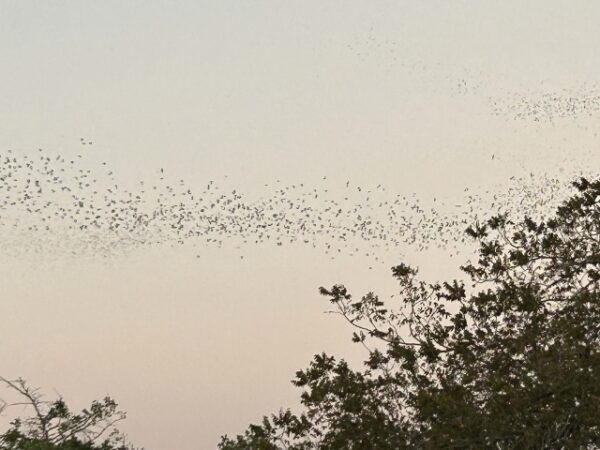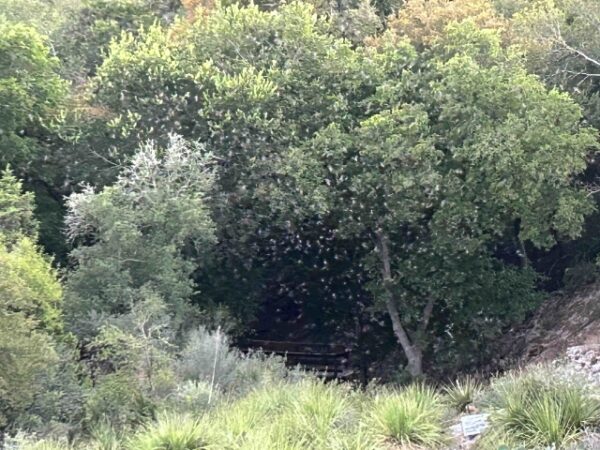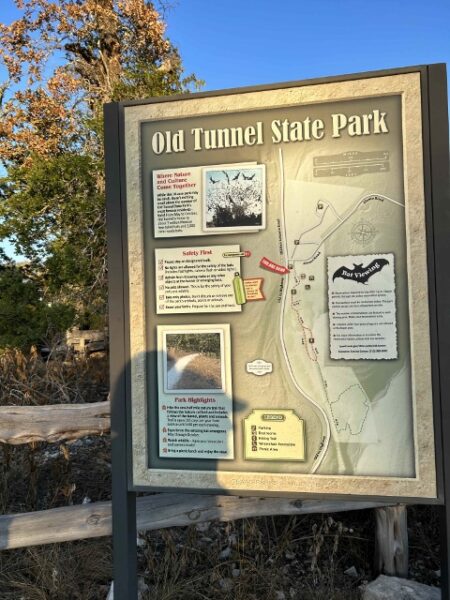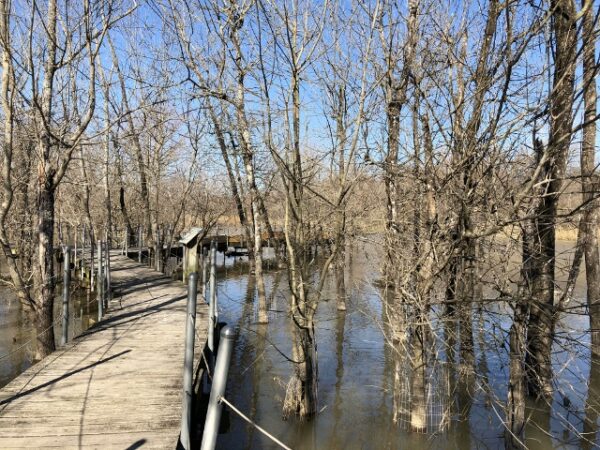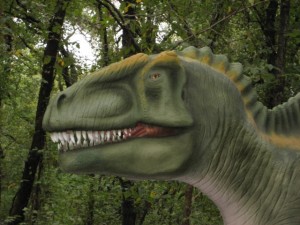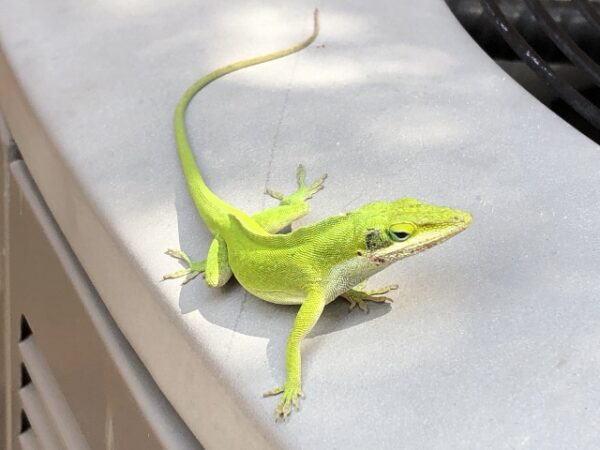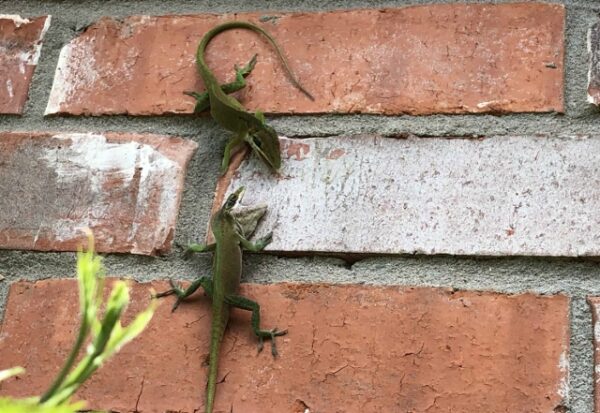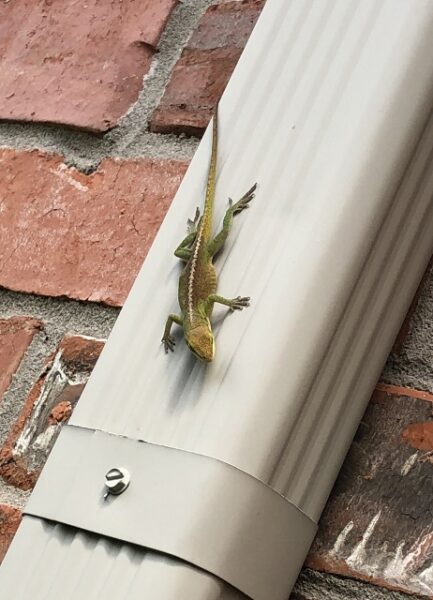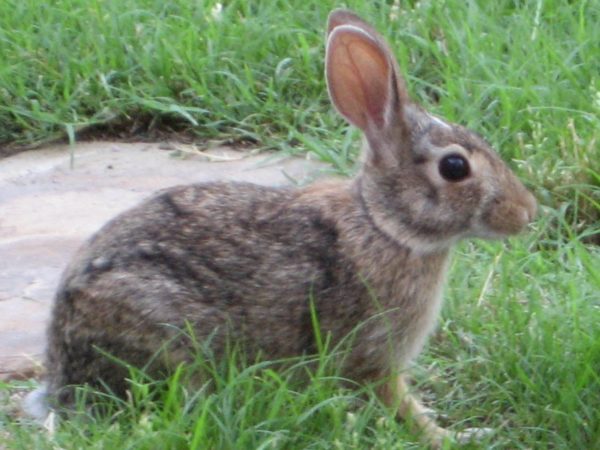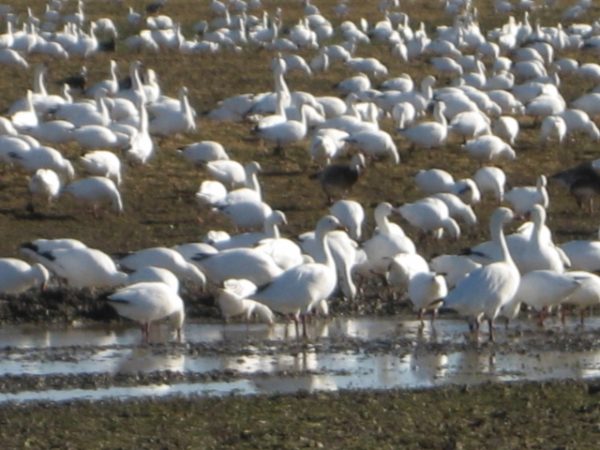
Hagerman National Wildlife Refuge, located on the Central Flyway, hosts up to 30,000 migratory birds each year. Just west of Sherman, the refuge provides wetland habitat for thousands of Canada, snow, and Ross geese along with ducks, heron, and songbirds. Late fall through winter offers prime viewing for birds wintering in our area.
North Texas Birding Bonanza
Over 300 species of birds reside or migrate through the refuge. Cormorant troll the waterways their long necks like submarine periscopes. Ducks such as northern shoveler paddle in ponds, and shorebirds from stilts to sandpipers are found along the Lake Texoma shoreline. My favorite is the great blue heron whose flight reminds me of a prehistoric pterodactyl. In wooded areas you’ll find wrens, titmice, and woodpeckers. Lucky birders may be rewarded with rare glimpses of migratory ibis, stork, and spoonbill. Most notably, bald eagle have returned to the refuge.
Unique Bird Blinds
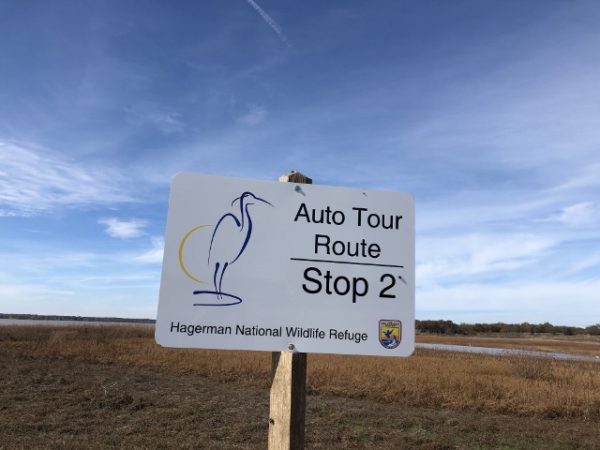
One of my favorite things about Hagerman is the opportunity to bird by car. The refuge has a four-mile, self-guided auto tour. Ideal for birders with limited mobility, the driving route gets you close to thousands of birds without ever leaving the car. The best part, your parked vehicle serves as an effective birding blind!
An audio auto tour is available for cell phone users. No phone, no problem. The tour is also available on CD from the visitors’ center. The auto tour includes six stops with information about Hagerman’s history and wildlife.
Hagerman Tram Tours
The Wildlife Explorer, a ten-person, open-air tram, is in operation for small group tours of the refuge every Saturday and Sunday at 2 pm. The tours are free but, due to space restrictions, require advance registration. Friends of Hagerman volunteers lead the tours. Other tram tours can be arranged in advance by contacting Friends of Hagerman.
Explore on foot
In addition to the driving route, the refuge sports miles of hiking trails. You’ll find additional bird species along with many local animals like armadillo, rabbit, fox, and squirrel; and the occasional coyote, bobcat, and feral pig. Trails cover a variety of habitat from prairie to marsh to woodland. The Meadow Pond trail is along an unpaved service road that is an easy hike for families with small children. For those wishing a hike on dirt trail, I recommend Haller’s Haven trail. It’s on the north end of the refuge and offers a longer loop footpath through woodland.
Enjoy your lunch at one of the many picnic areas scattered throughout the refuge.
Counting Birds
Every Tuesday, volunteers conduct a day-long bird count. Anyone, novice or expert, can ride with the bird counters on a space available basis. A recent Tuesday count tallied 76 different species. This weekly bird count is reported to Cornell Lab on Ornithology for research use. What makes Hagerman so unique is the fact that the bird census has been going on for over 50 years!
Other bird counts include first Saturday sunrise events affectionately dubbed The Little Sit. A master naturalist leads the count that starts 30-minutes before sunrise. This is a great opportunity for birders of all skill levels to get tips from the experts. Advance registration is encouraged but not required. Participants to Little Sits should bring their own binoculars and camp chairs.
Finally the Christmas Bird Count will happen at the refuge on December 16 this year. All skill levels are welcome. In addition to counting birds on the refuge, you can participate in the annual event right at home by contacting the Audubon Society.
Hagerman Second Saturday
On the second Saturday of most months, a master naturalist or other wildlife expert presents a free program open to the public. Most recently, I attended a talk on waterfowl, ducks and geese, at Hagerman. Being a true novice, I found the lecture helpful with its tips on bird identification. Birds aren’t the only topics covered. An upcoming talk will discuss frogs and past talks have included information about the area’s history.
Kids at Hagerman
Friends of Hagerman are active in producing programs for children under the moniker of The Refuge Rocks. There is a Junior Wildlife Nature Journal available at the visitors’ center. The pamphlet has a number of activities to keep youngsters engaged like a scavenger hunt and backyard birding notes. Programs designed for children are available most months and tie thematically to the season like the November program Talkin’ Turkey. What a great way to introduce children to a life-long appreciation of nature.
When You Go
Hagerman National Wildlife Refuge (6465 Refuge Road, Sherman) is a day use facility open from sunrise to sunset. Visit the Friends of Hagerman website for information on free tours and talks at the refuge.

